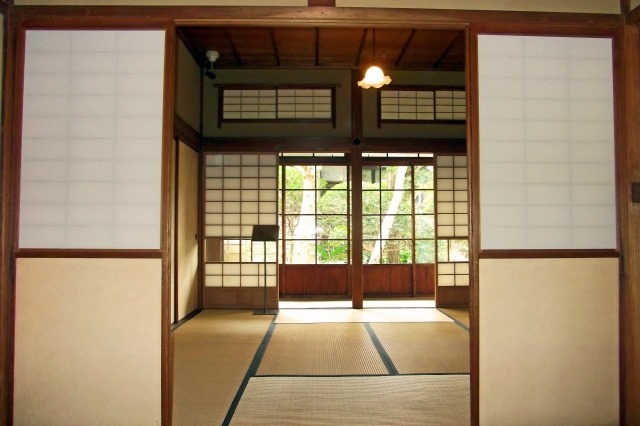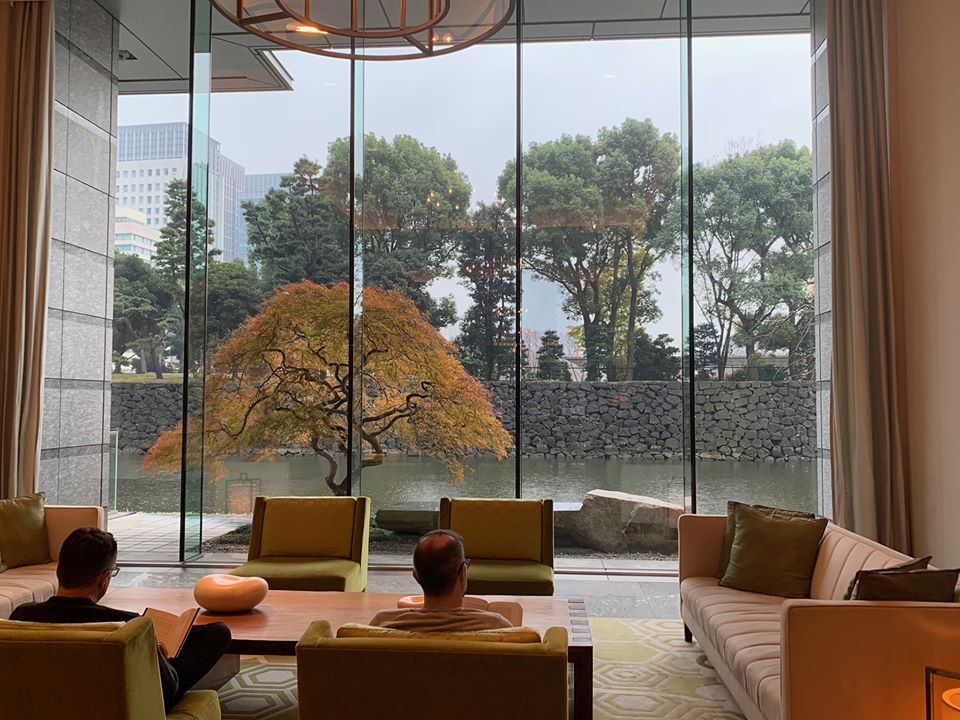 Since pottery is one of my passions, I love looking at photos of ceramics. The cup here caught my eye right away. It is old and faded and has cracks, yet all these imperfections seem to add to its beauty instead of taking away from it. The cracks on the back are highlighted and not hidden, as if to celebrate and bring forward the richness of the cup’s long life. A new cup may look better, but this one has depth and the wear and tear of the years has given it a character that a new cup won’t have. If I had to describe it in Japanese I would say it is very wabi-sabi.
Since pottery is one of my passions, I love looking at photos of ceramics. The cup here caught my eye right away. It is old and faded and has cracks, yet all these imperfections seem to add to its beauty instead of taking away from it. The cracks on the back are highlighted and not hidden, as if to celebrate and bring forward the richness of the cup’s long life. A new cup may look better, but this one has depth and the wear and tear of the years has given it a character that a new cup won’t have. If I had to describe it in Japanese I would say it is very wabi-sabi.
Finding beauty in imperfection – the core of wabi-sabi
 The roots of wabi-sabi can be traced to Zen Buddhism and its philosophy about life. According to Zen, all things (our selves included) are impermanent and imperfect and the way to satori, or enlightenment is through embracing this imperfection. We can see this philosophy reflected in the aesthetics of wabi-sabi: while Western art values perfection, symmetry and and ideal proportions, Japanese aesthetics appreciates the beauty of the imperfect, the impermanent, and the rustic. It derives not from love for the flawlessness but from respect for what is passing, fragile and modest. Wabi-sabi believes that things are always more beautiful from bearing the marks of age and individuality.
The roots of wabi-sabi can be traced to Zen Buddhism and its philosophy about life. According to Zen, all things (our selves included) are impermanent and imperfect and the way to satori, or enlightenment is through embracing this imperfection. We can see this philosophy reflected in the aesthetics of wabi-sabi: while Western art values perfection, symmetry and and ideal proportions, Japanese aesthetics appreciates the beauty of the imperfect, the impermanent, and the rustic. It derives not from love for the flawlessness but from respect for what is passing, fragile and modest. Wabi-sabi believes that things are always more beautiful from bearing the marks of age and individuality.
 A great example of the wabi-sabi principle is the Zen garden of the Ryoanji temple in Kyoto. Its simple beauty is unpretentious and clear from all but the essential. What is interesting is the effect the earthen wall surrounding the garden has on how we perceive it. The brown and orange colors of the wall, faded and stained by the elements add ‘rustiness’ and a depth of age to the garden, that speak to us about the centuries of its existence. How we experience the garden would be quite different, if the wall was freshly painted.
A great example of the wabi-sabi principle is the Zen garden of the Ryoanji temple in Kyoto. Its simple beauty is unpretentious and clear from all but the essential. What is interesting is the effect the earthen wall surrounding the garden has on how we perceive it. The brown and orange colors of the wall, faded and stained by the elements add ‘rustiness’ and a depth of age to the garden, that speak to us about the centuries of its existence. How we experience the garden would be quite different, if the wall was freshly painted.
Finding beauty in simplicity

Traditional style room (washitsu)
Because wabi-sabi esthetics favor simplicity, some may see it is a kind of minimalism. To me it goes deeper than that. It is about stripping away everything that is non-essential until what is left is the pure essence. The unadorned beauty of an empty space, the grace of the precise movement of the hand of a tea master, the simple elegant shape of a pottery piece – all these have one thing in common: their outer layers have been peeled away so what we see is the beautiful core. Perhaps it is this lack of external distractions that makes traditional Japanese art forms so captivating and enchanting.
Haiku poems are another exercise of wabi-sabi, this time using the medium of words. Consisting of three short lines that do not rhyme, haiku is more than a poem. It is a way of looking at the physical world and seeing something deeper, an expression of the very essence of the scene.
A summer river being crossed
how pleasing
with sandals in my hands!
The lamp once out
Cool stars enter
The window frame.
The wabi-sabi philosophy’s message
It is always interesting to observe how art mirrors the spiritual values of the people who create it. In our Western world if something is broken, it is either thrown away or if possible when repaired the breakage would be artfully concealed.
In Japan, quite the opposite happens. The object is not only kept and repaired, but the areas of breakage are mended with lacquer mixed with powdered gold or silver so they stand out. The breakage and repair are treated as part of the history of an object, rather than something to disguise. Looking at the beautifully mended cup on the picture I am thinking that is a symbol of the most powerful messages of the wabi-sabi philosophy: embrace yourself as you are and do not be ashamed of the cracks you carry. They are the witnesses of your life’s events and show you have lived. They give your life both depth and richness.
When visiting Japan, some of your most vivid memories may be born from the contact with the expression of the wabi-sabi philosophy in every aspect of life in the country: from the unique brand of Japanese hospitality to the attention to detail of how food is prepared and served, the mannerism of people and the design of spaces and buildings. If you pay attention you will see Zen’s love for the harmonious, the natural, the humble and the simple everywhere! Opening to it may give you a very transformative and deep experience of the soul of Japan.
* The Spirit of Japan Tours organizes private and group tours to temples and sites where you can experience the richness of Japan’s spirituality and traditions. Please, message us for more information about our future tours.




